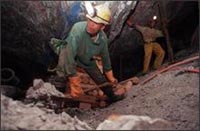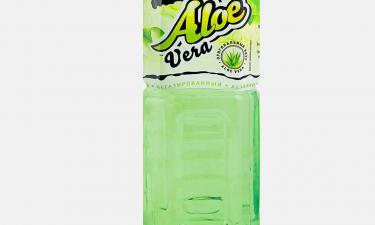More than 3,000 workers trapped in South African gold mine

In a dramatic night operation more than 1,700 scared, exhausted and hungry workers were rescued from the gold mine.
There were no casualties when a pressurized air pipe snapped at the mine near Johannesburg and tumbled down a shaft, causing extensive damage to an elevator and trapping more than 3,000 miners Wednesday.
The hundreds of workers who remained underground were all near a ventilation shaft and had been given water - though no food for fear of provoking a scramble among miners who had been underground for nearly two days, according to Peter Bailey, health and safety chairman for the National Mineworkers Union.
The country's minerals and energy minister and the head of the mining company Harmony Gold Mining Co. vowed to improve safety in one of South Africa's most important industries.
"We have to recommit ourselves to refocus on safety in this country, our safety record both as a company and an industry leave much to be desired," Harmony chairman Patrice Motsepe said, according to the South African Press Association, as union officials accused the industry of taking short cuts on safety in the interest of profit.
At the mine, general manager Stan Bierschenk said that while morale was low underground, miners perked up as soon as they were rescued. He said most complained of heat exhaustion and fatigue.
Bierschenk said the company hoped to complete the rescue by lunchtime, although union official Bailey said late afternoon was more realistic.
Most of the workers were stranded a kilometer and a half - or one mile - underground at the Elandsrand mine and had to be brought to the surface in a second, smaller cage in another shaft.
Sethiri Thibile, one of the first miners rescued, clutched a cold beef sandwich and a bottle of water he was given when he reached the surface.
"I was hungry, though we were all hungry," said Thibile, 32, an engineering assistant who had been underground since 5 a.m. Wednesday. He said there was no food or water in the mine.
"Most of the people are scared and we also have some women miners there underground," said Thibile.
One miner, who did not wish to give his name, said that conditions underground were deteriorating. He said the men were trapped in a confined area that stunk of urine and feces.
"The morale of the family members is low, the morale of colleagues of the trapped miners is naturally low," said the mineworkers union's Bailey. "There is a lot of anger toward management."
Family members stood outside the mine offices, complaining that they had not been given enough information about their loved ones trapped underground.
"I am very traumatized, exhausted, not knowing what is going on," said Sam Ramohanoe, whose wife, Flora, 31, was among the trapped miners. He said the family members had to force the company to send a management official to talk to them.
"It is very unfair to us not knowing what is going on with our beloved ones," he said.
As the rescue effort proceeded, allegations of lax safety standards began to fly.
Bailey said that although the company inspected the shaft last week, the check took just 30 minutes rather than the full day required for an exhaustive inspection. He said that management had allowed the alternative emergency exit to become flooded because it had become complacent about safety standards. He said this was a general trend in the industry.
Minerals and Energy Minister Buyelwa Sonjica visited the mine at Carletonville - a town in South Africa's mining heartland near Johannesburg - and said that health and safety legislation would be "tightened up" to try to prevent accidents.
"I wouldn't call it a crisis given that mining is risky in its nature, so incidents of this kind will occur, but I still think there is room for improvement and to reduce accidents in the mines," Sonjica was quoted as saying by the South African Press Association.
Last year, 199 mineworkers died in accidents, mostly rock falls, the government Mine Health and Safety Council reported in September.
South Africa is the world's largest producer of gold as well as a number of other minerals. Government statistics from 2005 said 55 different minerals were produced from 1,113 mines and quarries, of which 45 produced gold.
Harmony's Elandsrand mine is the third largest producing gold mine in South Africa. The company said it produces an average of about 600 kilograms of gold every month.
Company spokeswoman Amelia Soares said the Elandsrand mine had never had any fatal accidents and had won a number of safety awards. She said the mine would remain closed pending the outcome of a full investigation.
Harmony boss Motsepe said he had been in the mining business since the 1980s and could not remember another incident in which so many miners had been trapped below ground. He committed the mine and the company to cooperate fully with the investigation and scheduled an urgent meeting with union leaders.
"We run companies that have an obligation to all constituencies," he said, according to SAPA. "Shareholders are one of those constituencies but we have an obligation to our employees (as well)," he said.
Subscribe to Pravda.Ru Telegram channel, Facebook, RSS!




